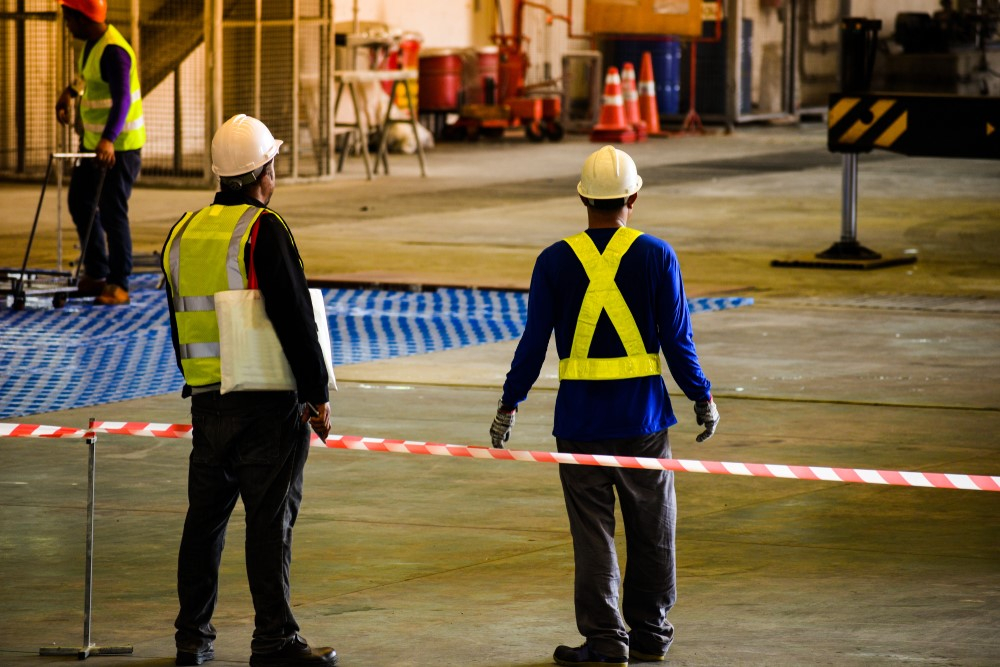All About Roar Solutions
All About Roar Solutions
Blog Article
Some Known Details About Roar Solutions
Table of ContentsRoar Solutions - QuestionsGet This Report about Roar SolutionsSome Ideas on Roar Solutions You Need To Know
In such an atmosphere a fire or explosion is possible when three standard conditions are met. This is typically referred to as the "hazardous area" or "combustion" triangular. In order to protect installations from a potential surge a technique of evaluating and identifying a potentially harmful location is called for. The purpose of this is to make certain the right choice and installation of tools to inevitably stop an explosion and to guarantee safety of life.
(https://www.giantbomb.com/profile/roarsolutions/)
No tools needs to be set up where the surface temperature of the devices is more than the ignition temperature level of the provided danger. Below are some typical dust hazardous and their minimum ignition temperature level. Coal Dust 380C 225C Polythene 420C (thaws) Methyl Cellulose 420C 320C Starch 460C 435C Flour 490C 340C Sugar 490C 460C Grain Dirt 510C 300C Phenolic Resin 530C > 450C Aluminium 590C > 450C PVC 700C > 450C Residue 810C 570C The probability of the risk existing in a concentration high adequate to create an ignition will differ from place to location.
In order to identify this danger an installation is separated into areas of risk relying on the amount of time the dangerous exists. These locations are described as Zones. For gases and vapours and dusts and fibres there are 3 zones. Area 0 Zone 20 An unsafe ambience is highly most likely to be present and may be existing for extended periods of time (> 1000 hours annually) and even constantly Area 1 Area 21 A harmful ambience is possible yet not likely to be present for extended periods of time (> 10 450 C [842 F] A category of T6 indicates the minimum ignition temperature is > 85 C [185 F] Hazardous location electric equipment perhaps developed for usage in higher ambient temperature levels. This would indicated on the rating plate e.g. EExe II C T3 Ta + 60C( This suggests at 60C ambient T3 will certainly not be surpassed) T1 T1, T2, T3, T4, T5, T6 T2 T2, T3, T4, T5, T6 T3 T3, T4, T5, T6 T4 T4, T5, T6 T5 T5, T6 T6 T6 A T Class rating of T1 suggests the optimum surface temperature level created by the tool at 40 C is 450 C. Assuming the connected T Class and Temperature score for the equipment are proper for the location, you can constantly utilize an instrument with a much more rigorous Department score than required for the area. There isn't a clear response to this question however. It truly does depend upon the kind of tools and what repair services require to be brought out. Devices with certain examination treatments that can not be performed in the field in order to achieve/maintain 3rd party rating. Need to return to the factory if it is prior to the devices's service. Field Repair Work By Authorised Employee: Difficult testing may not be needed however details procedures may need to be followed in order for the equipment to maintain its 3rd party score. Authorised personnel have to be utilized to perform the job appropriately Repair work must be a like for like substitute. New component should be considered as a straight replacement needing no special screening of the devices after the repair work is complete. Each tool with a harmful rating need to be assessed separately. These are described at a high degree listed below, but also for more thorough info, please refer directly to the standards.
The smart Trick of Roar Solutions That Nobody is Talking About
The tools register is a comprehensive data source of devices documents that consists of a minimum set of fields to identify each thing's location, technological specifications, Ex category, age, and ecological data. This information is essential for monitoring and handling the equipment effectively within unsafe areas. On the other hand, for periodic or RBI tasting examinations, the quality will be a mix of In-depth and Close examinations. The ratio of Detailed to Close evaluations will certainly be determined by the Devices Risk, which is examined based upon ignition danger (the probability of a resource of ignition versus the probability of a combustible atmosphere )and the hazardous location category
( Area 0, 1, or 2). This variant will certainly also influence the resourcing requirements for work prep work. As soon as Great deals are defined, you can develop tasting plans based upon the sample size of each Great deal, which refers to the number of arbitrary devices items to be inspected. To figure out the called for example dimension, 2 facets need to be evaluated: the dimension of the Whole lot and the group of inspection, which indicates the level of initiative that ought to be used( lowered, regular, or increased )to the inspection of the Great deal. By integrating the classification of evaluation with the Lot dimension, you can then develop the appropriate rejection requirements for an example, indicating the allowable number of malfunctioning products located within that example. For even more details on this process, please describe the Power Institute Standards. The IEC 60079 conventional advises that the optimum period between examinations should not surpass three years. EEHA assessments will certainly also be performed outside of RBI campaigns as component of arranged maintenance and equipment overhauls or repair services. These assessments can be attributed toward the RBI example dimensions within the affected Great deals. EEHA inspections are performed to recognize mistakes in electrical devices. A weighted racking up system is vital, as a solitary tool might have several mistakes, each with differing levels of ignition risk. If the consolidated rating of both evaluations is much less than two times the mistake rating, the Great deal is regarded appropriate. If the Lot is still thought about undesirable, it must undertake a full examination or reason, which may activate more stringent inspection methods. Accepted Whole lot: The sources of any type of faults are identified. If a typical failing setting is located, added devices may call for evaluation and fixing. Faults are classified by intensity( Safety and security, Integrity, House cleaning ), guaranteeing that immediate problems are examined and dealt with immediately to alleviate any type of influence on security or procedures. The EEHA database need to track and tape the lifecycle of faults together with the rehabilitative activities taken. Applying a robust Risk-Based Examination( RBI )strategy is essential for making sure compliance and safety and security in managing Electric Equipment in Hazardous Areas( EEHA) (eeha certificate). Automated Fault Rating and Lifecycle Administration: Easily handle mistakes and track their lifecycle to enhance examination accuracy. The intro of this assistance for risk-based inspection even more strengthens Inspectivity's position as a best-in-class solution for governing conformity, as well as for any asset-centric inspection use situation. If you are interested in discovering more, we invite you to request a demo and find just how our option can change your EEHA administration procedures.
How Roar Solutions can Save You Time, Stress, and Money.

In terms of explosive risk, an unsafe area is an environment in which an explosive atmosphere exists (or may be expected to be present) in quantities that require unique preventative measures for the construction, installment and use tools. eeha. In this post we discover the difficulties faced in the workplace, the threat control actions, and the called for competencies to work safely
These compounds can, in certain problems, form explosive ambiences and these can have major and awful consequences. Many of us are acquainted with the fire triangle remove any kind of one of the three components and the fire can not happen, however what does this mean in the context of harmful areas?
In a lot of instances, we can do little regarding the degrees of oxygen airborne, yet we can have substantial influence on sources of ignition, for instance electric devices. Hazardous areas are documented on the harmful area classification illustration and are identified on-site by the triangular "EX-SPOUSE" sign. Here, among various other essential information, zones are split into 3 kinds depending upon the danger, the probability and duration that an explosive environment will certainly exist; Area 0 or 20 is regarded the most unsafe and Area 2 or 22 is deemed the least.
Report this page